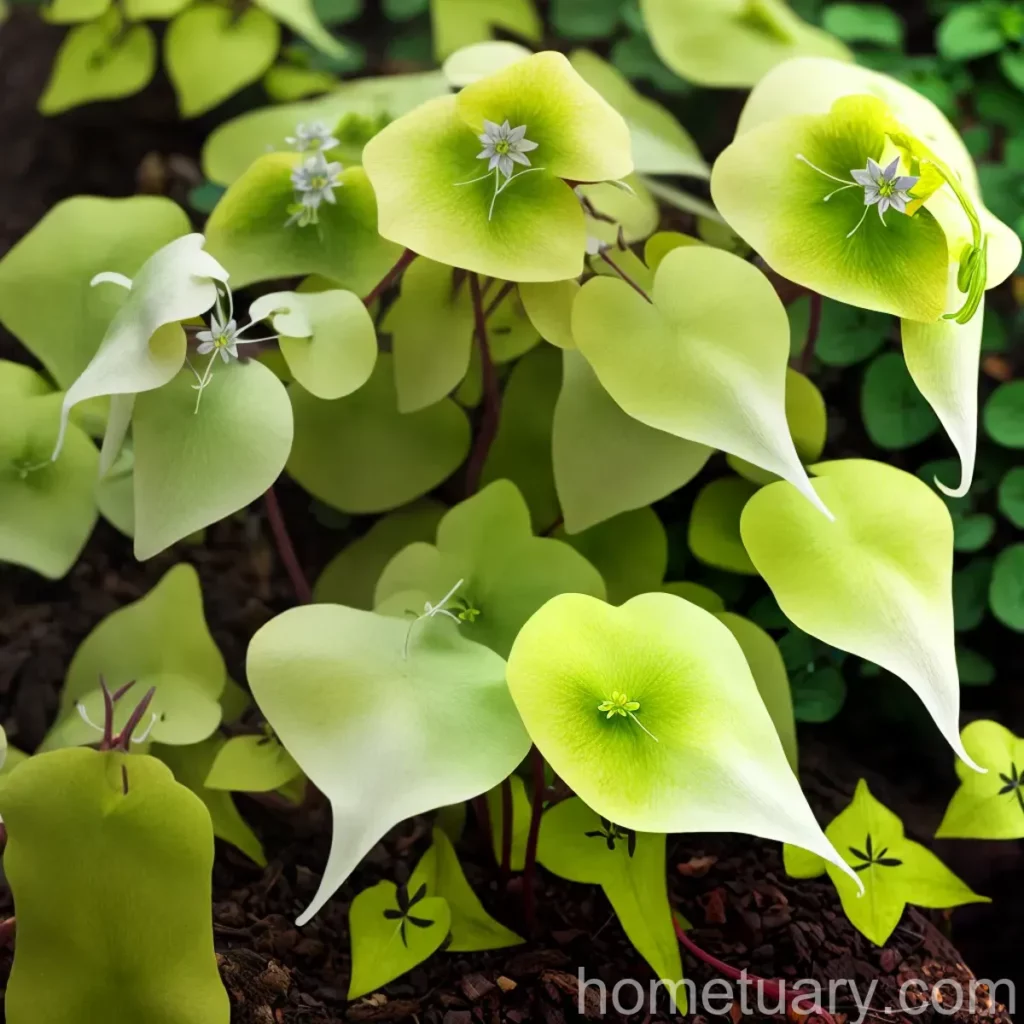Bishop’s Hat (Epimedium alpinum): A Comprehensive Guide
What is Bishop’s Hat (Epimedium alpinum)?
Bishop’s Hat, botanically known as Epimedium alpinum, is a perennial herbaceous plant that belongs to the family Berberidaceae. It is a charming and delicate plant that is prized for its ornamental and medicinal properties. The common name “Bishop’s Hat” is derived from the shape of its leaves, which resemble the hats worn by bishops in the medieval era. This enchanting plant is native to Europe and is admired for its dainty flowers, attractive foliage, and versatility in various garden settings.
In this comprehensive guide, we will explore the culture, uses, care requirements, propagation methods, common diseases, and much more, to gain a deep understanding of Epimedium alpinum.
Key Takeaways – Bishop’s Hat (Epimedium alpinum)
Before delving into the specifics of Epimedium alpinum, let’s take a quick look at the key takeaways about this remarkable plant.
- Plant Name: Bishop’s Hat (Epimedium alpinum)
- Botanical Family: Berberidaceae
- Common Name: Bishop’s cap plant
- Type: Perennial herbaceous plant
- Key Uses: Ornamental, medicinal
- Notable Feature: Characteristic hat-shaped leaves
- Native Range: Europe
- Growing Conditions: Shade-tolerant, moderate water requirements
Now, let’s explore the various aspects of Bishop’s Hat in detail.
Culture
Uses
- Ornamental Use: Epimedium alpinum is widely cultivated for its ornamental value, adding a touch of elegance to shady garden spots with its neat foliage and delicate blooms.
- Medicinal Use: Historically, various species of Epimedium have been used in traditional medicine for their aphrodisiac and medicinal properties. However, it’s important to note that the medicinal uses require expert consultation before consumption.
Water
- Watering Needs: Bishop’s Hat appreciates moderate moisture levels. It thrives in well-draining soil and prefers regular watering, especially during dry spells. However, it’s important to avoid overwatering as excessively soggy conditions can be detrimental to the plant’s health.
Sunlight
- Sun Exposure: Epimedium alpinum is well-suited to shady or partially shaded areas. It thrives in dappled sunlight or gentle morning sun, making it an excellent choice for woodland gardens or under the canopies of larger trees.
Fertilizer
- Fertilization: During the growing season, lightly amending the soil with organic compost or a balanced, slow-release fertilizer can support the plant’s growth and blooming potential. However, it’s crucial to follow recommended application rates to prevent over-fertilization.
Soil
- Soil Requirements: The ideal soil for Epimedium alpinum is rich, humusy, and well-draining. It thrives in slightly acidic to neutral soil pH and benefits from the addition of organic matter to enhance soil structure and fertility.
Pruning
- Pruning Techniques: In early spring, removing any damaged or withered foliage can rejuvenate the appearance of the plant. Additionally, pruning or cutting back old stems can encourage vigorous new growth and promote a tidy, compact habit.
Propagation
Methods
Division
- Division: Dividing mature clumps of Epimedium alpinum in early spring is an effective method for propagation. Carefully separating the rhizomes or root sections and replanting them in suitable locations can yield new, thriving plants.
Seed Propagation
- Seed Propagation: While seeds of Epimedium alpinum are available, it’s important to note that they may not come true to the parent plant. Nevertheless, sowing fresh seeds in well-prepared, moist seed-starting mix and providing the right conditions for germination can result in new seedlings.
Container Popularity
- Container Gardening: Due to its compact growth habit and adaptable nature, Epimedium alpinum is well-suited to container gardening. Utilizing containers allows for greater control over the growing conditions and enables individuals with limited garden space to enjoy the beauty of this exceptional plant.
Common Diseases
Disease Diagnosis
Epimedium alpinum is generally resilient to most diseases, but it can occasionally encounter the following issues:
- Powdery Mildew: Under prolonged periods of high humidity or poor air circulation, Bishop’s Hat may be susceptible to powdery mildew. This fungal disease can cause a powdery white growth on the leaves, ultimately affecting the plant’s vigor.
- Leaf Spot: Certain species of Epimedium can be prone to leaf spot diseases, characterized by the development of dark, irregular spots on the foliage.
While these diseases can impact the plant’s aesthetics and overall health, proactive measures such as promoting good air circulation, practicing proper watering techniques, and removing and disposing of infected plant debris can help mitigate these issues.
Common Pests
Pests
Spider Mites
- Spider Mites: These tiny arachnids can infest Epimedium alpinum and cause stippled or discolored leaves as they feed on plant sap. Regular monitoring and the application of horticultural oils or insecticidal soaps can help manage these pests.
Aphids
- Aphids: These small, soft-bodied insects can congregate on the new growth of Bishop’s Hat, sucking sap from the plant and potentially causing distortion or yellowing of the affected leaves. Introducing natural predators or using insecticidal sprays can control aphid populations.
While these pests can be bothersome, prompt detection and appropriate intervention strategies can safeguard Epimedium alpinum from significant damage.
Botanist’s Tips
Tips for Success
- Shade Management: Providing the right amount of shade is crucial for the wellbeing of Epimedium alpinum. It excels in locations with dappled or partial shade and benefits from protection against intense afternoon sun.
- Mulching: Applying a layer of organic mulch around the base of the plant can conserve moisture, suppress weed growth, and enhance the aesthetics of the planting area.
- Companion Planting: Pairing Bishop’s Hat with shade-loving companions such as hostas, ferns, and woodland bulbs can create visually pleasing and harmonious plant combinations.
Fun Facts
- The genus name “Epimedium” is derived from the Greek word “epi” meaning “upon” and “médéion” referring to a barren, rocky place, in allusion to the natural habitat of these plants.
- Some species of Epimedium are commonly referred to as “Barrenwort” due to the folklore that consuming the plants caused animals to become infertile. However, this has no scientific basis and is simply a fascinating anecdote associated with the genus.
Links to External Resources
To further enhance your knowledge and appreciation of Epimedium alpinum, here are some valuable resources for reference:
- Royal Horticultural Society – Epimedium
- The American Phytopathological Society – Powdery Mildew
- University of California Statewide Integrated Pest Management Program – Spider Mites
- Missouri Botanical Garden – Aphids
- American Society for the Prevention of Cruelty to Plants – How to Care for Epimediums
In conclusion, Bishop’s Hat (Epimedium alpinum) is a captivating and versatile plant that encompasses both aesthetic and practical attributes. With proper care and attention to its specific needs, this enchanting perennial can enrich garden spaces and contribute to the natural beauty of landscapes. Whether utilized for its ornamental allure or esteemed for its historical medicinal significance, Epimedium alpinum stands as a testament to the diversity and appeal of plant life.
So, whether you’re contemplating adding a touch of elegance to your shaded garden nook or seeking a fascinating plant with a rich heritage, consider welcoming Bishop’s Hat into your green spaces and savor the rewards it brings.
Remember, from the distinctive charm of its hat-shaped leaves to the delicate beauty of its flowers, Bishop’s Hat is indeed a plant worthy of admiration and care.
Happy gardening!
Written by:
[Your Name]
Plant Scientist















